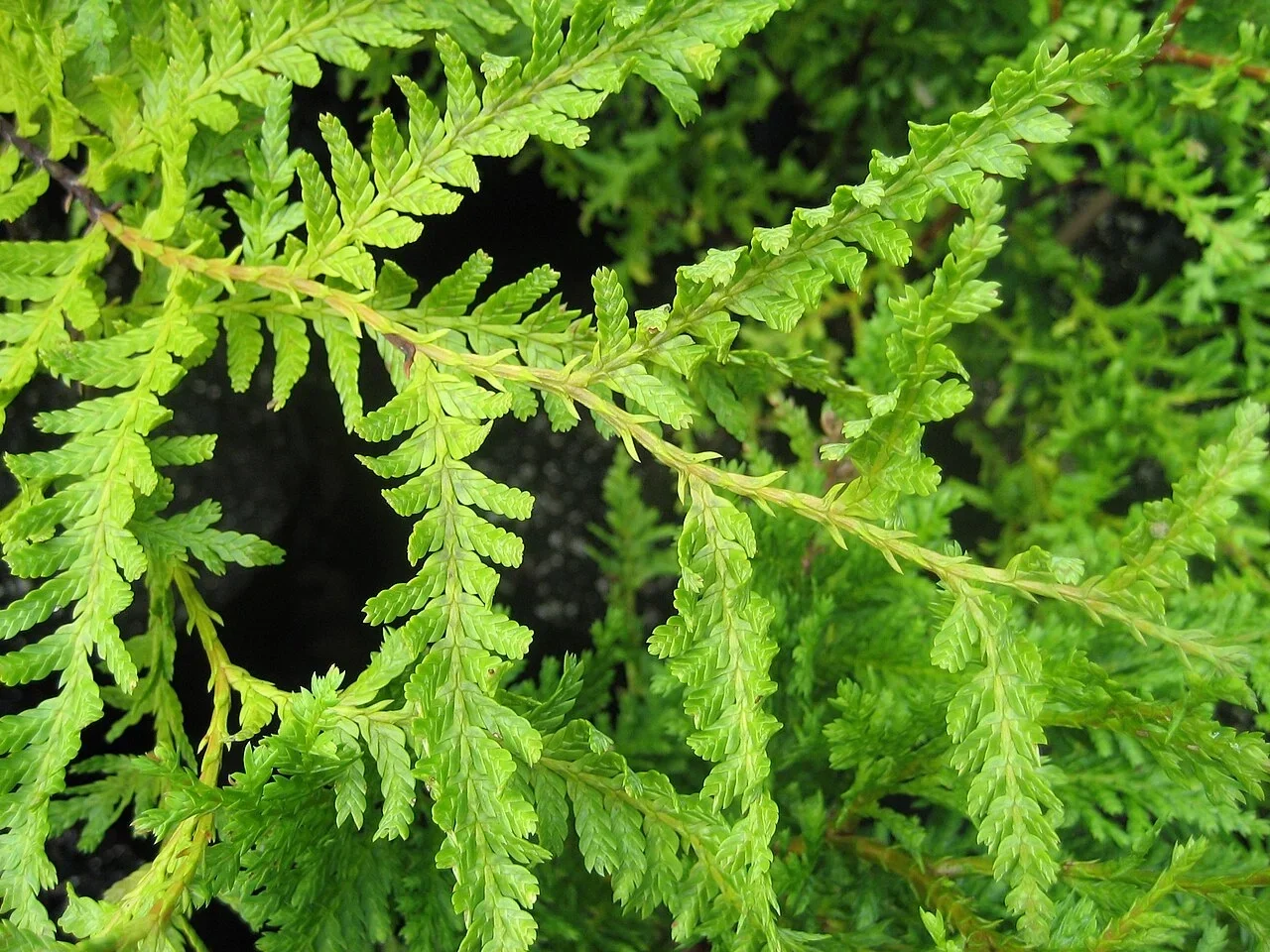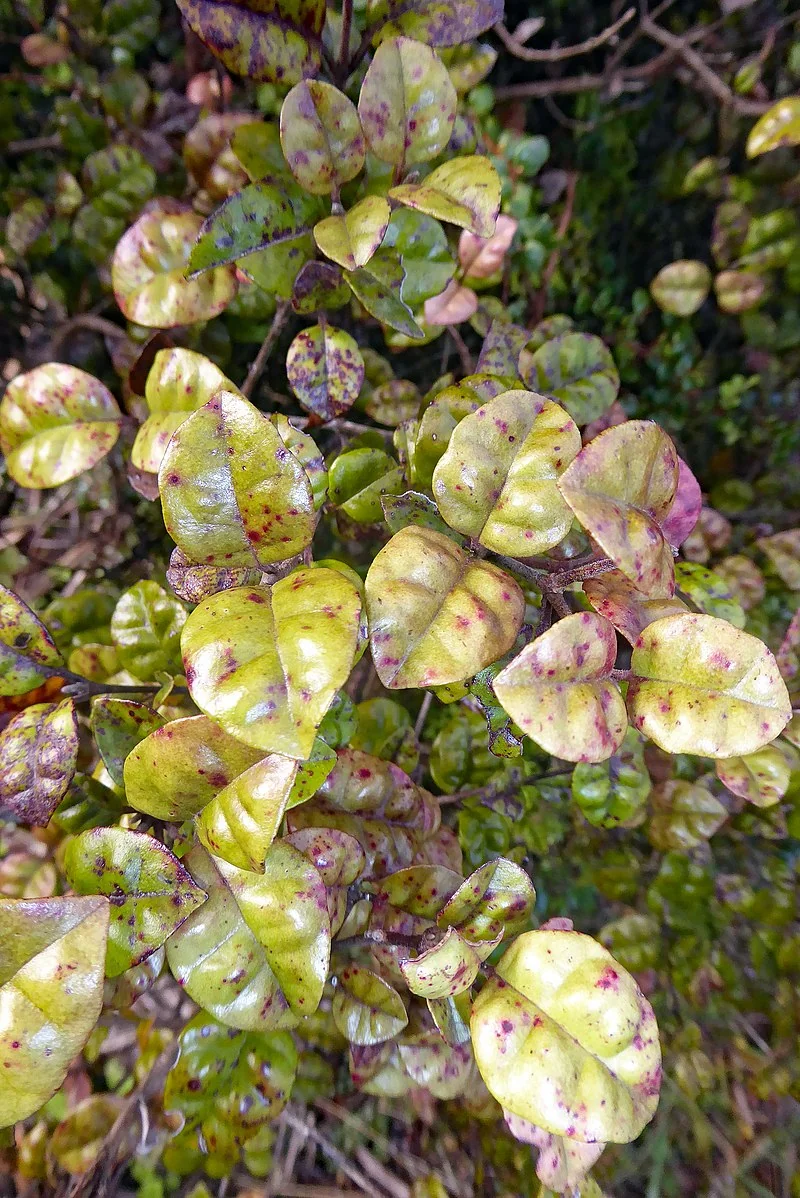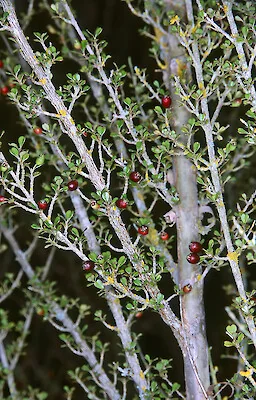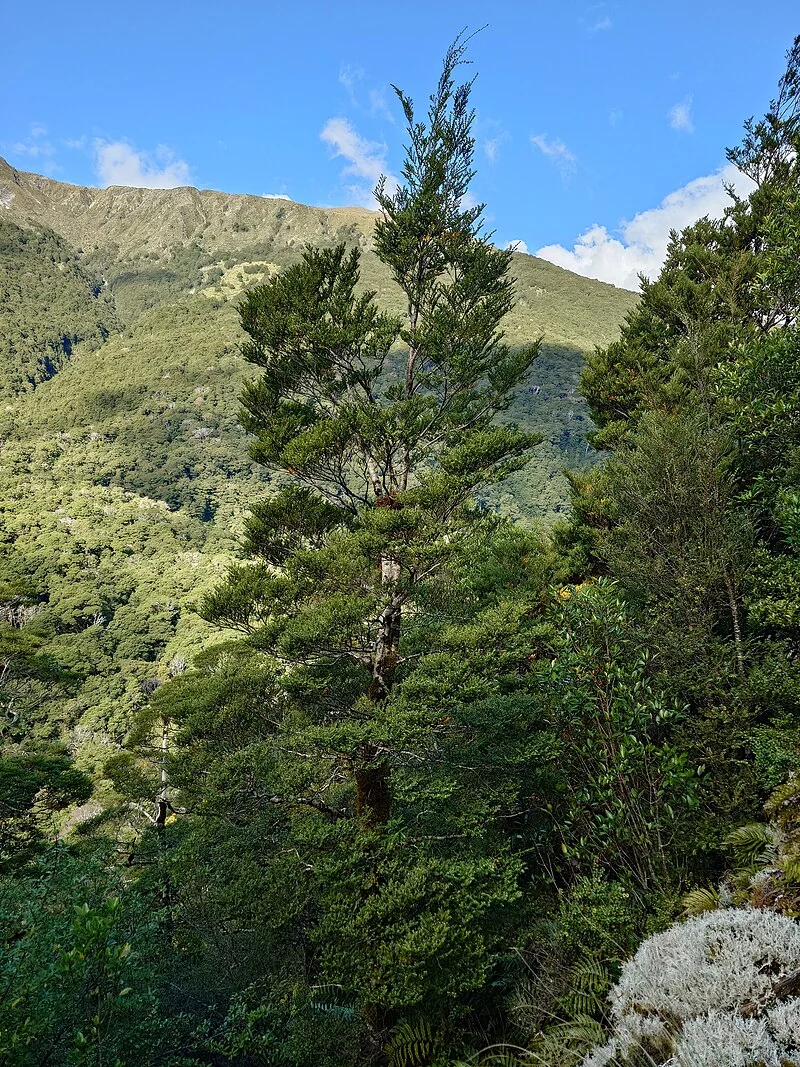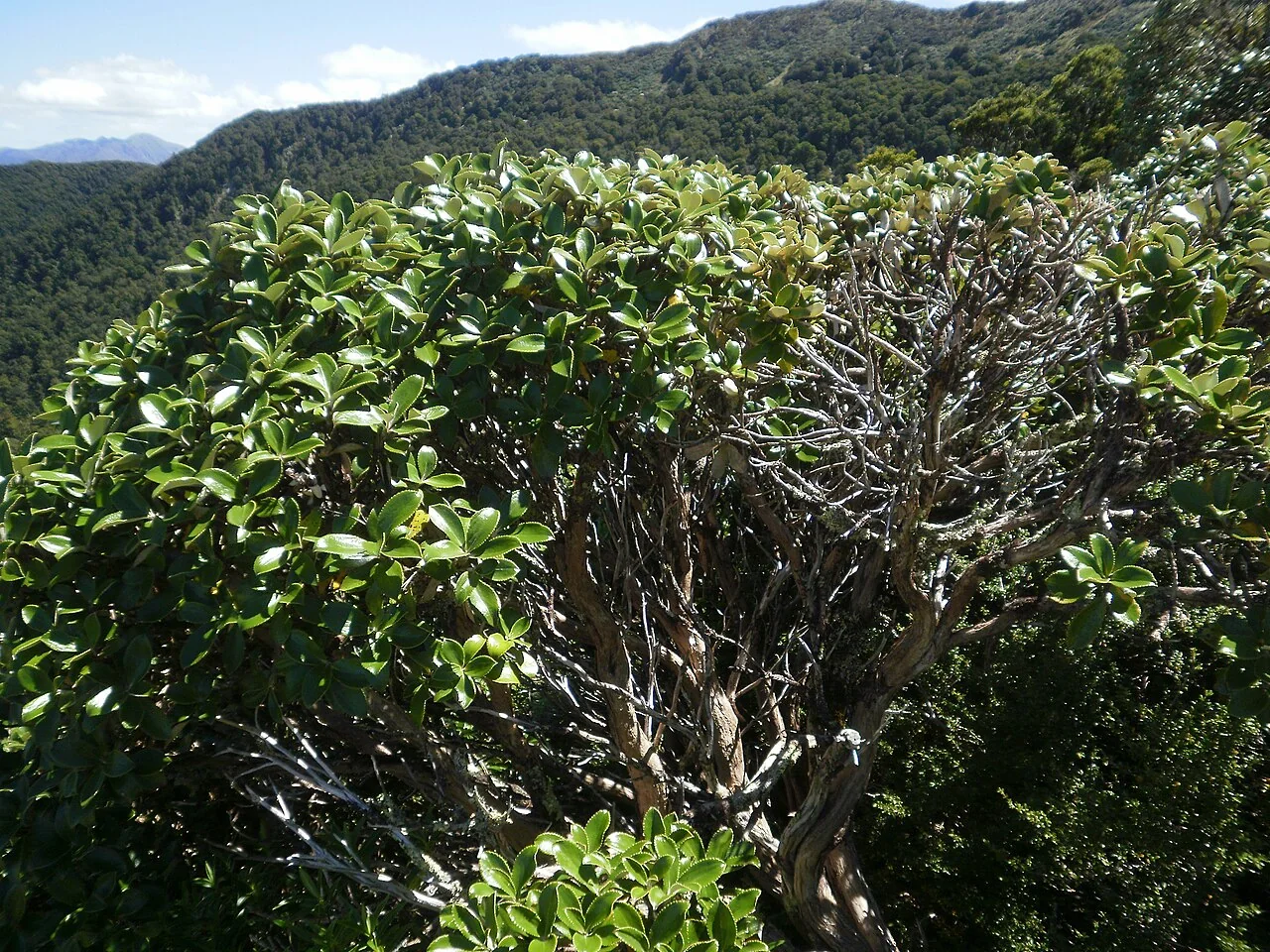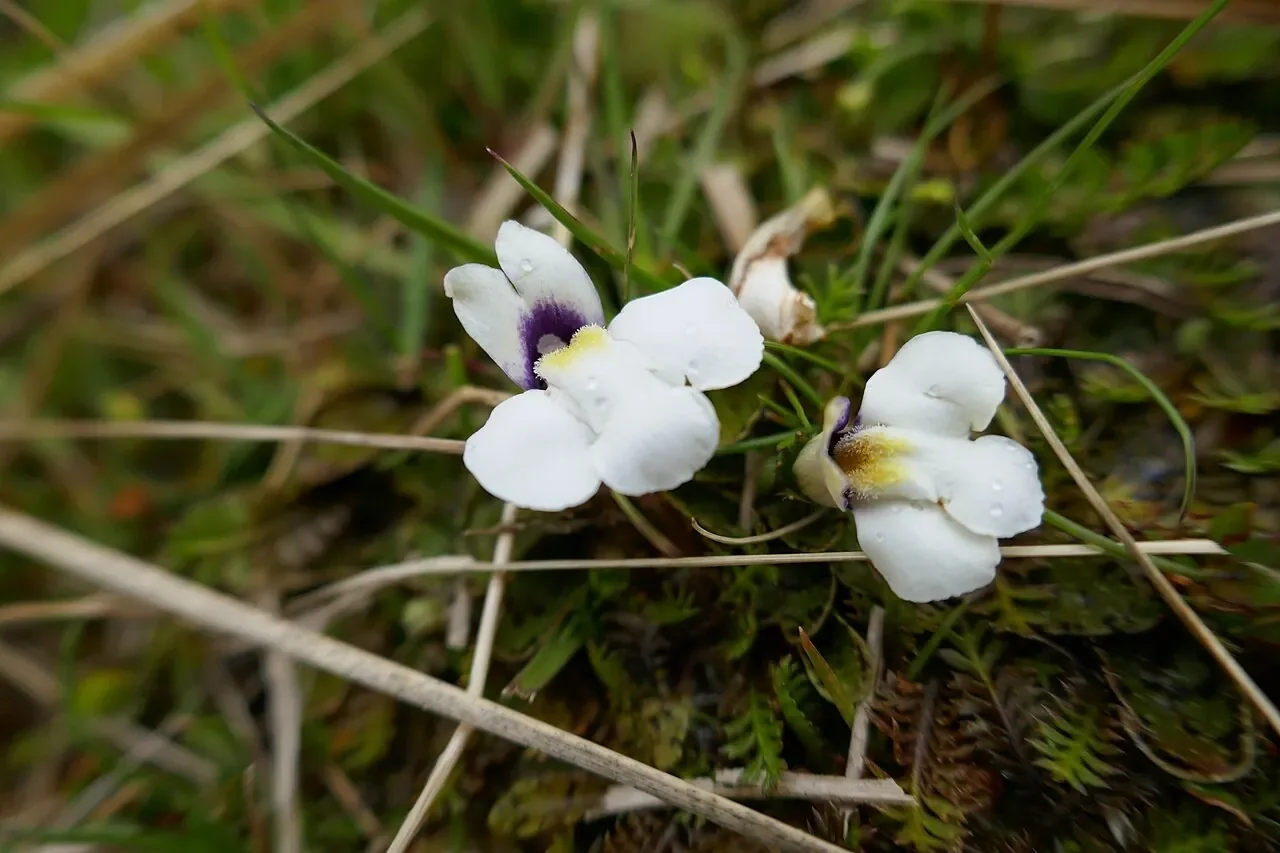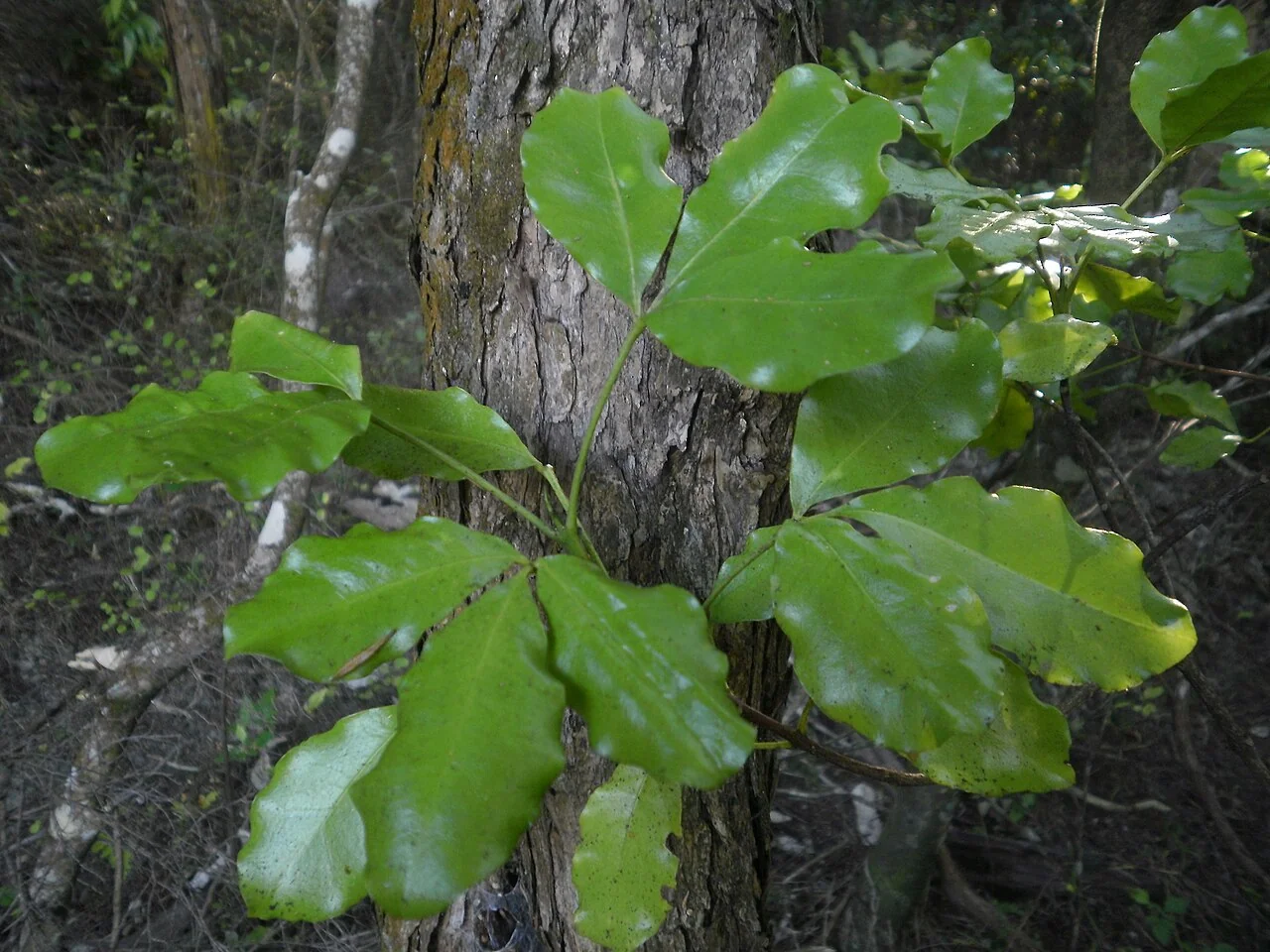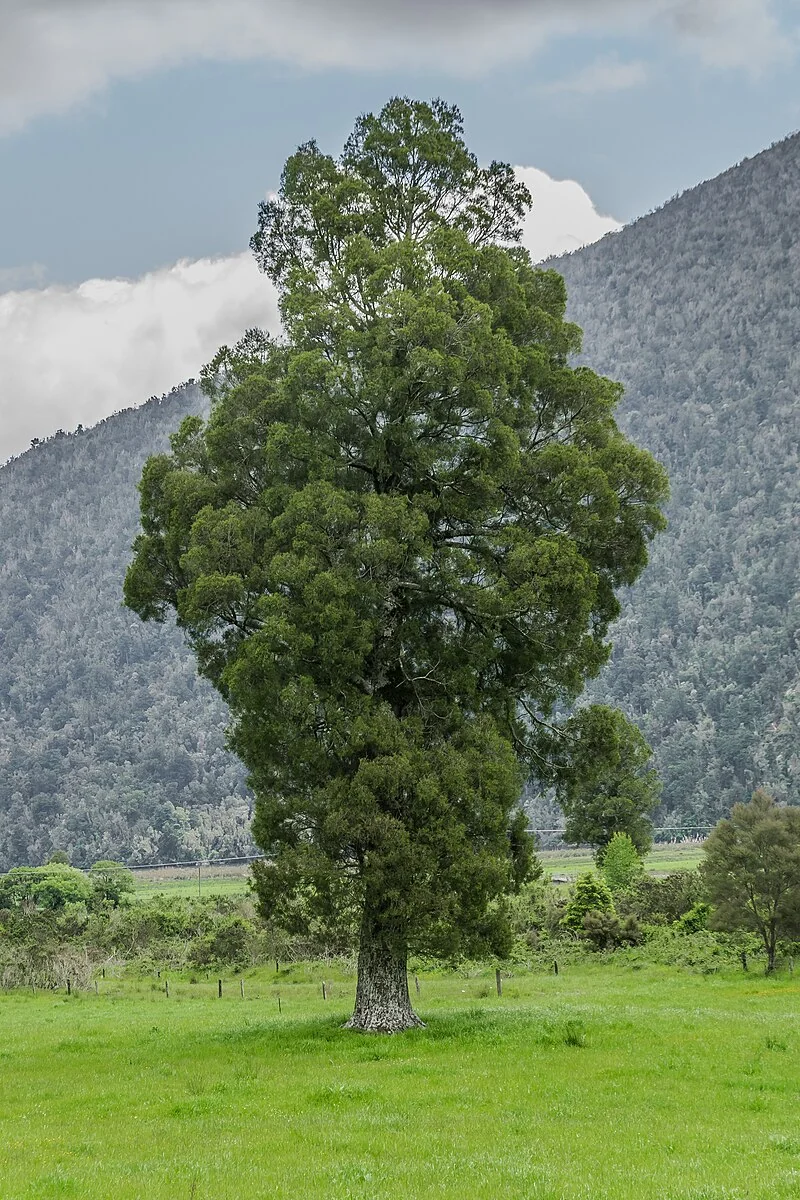
Pahautea
Libocedrus bidwillii
This native plant, known as Pahautea (scientific name: Libocedrus bidwillii), is a remarkable species endemic to New Zealand. It is characterized by its unique features, ecological role, and cultural significance. This comprehensive guide provides detailed information on its care, propagation, and importance within the New Zealand ecosystem. Understanding this plant contributes to the appreciation of our rich biodiversity and heritage. native trees

Plant Description
Botanical Features
Pahautea (Libocedrus bidwillii), also known as Kaikawaka or New Zealand Cedar, is an evergreen coniferous tree endemic to New Zealand. It typically grows to 20-25 meters tall, though it can also appear as a shrub in open conditions. The bark is thin, scaly, and greyish-brown, exfoliating in longitudinal strips. The foliage is arranged in flattened sprays, especially in young trees. The leaves are scale-like, 1.5-2 mm long and 1 mm broad, arranged in opposite decussate pairs on the shoots. It is monoecious, with male and female cones on the same plant. The seed cones are cylindrical or ovoid, 8-12 mm long, with four scales, each bearing a prominent curved spine-like bract. It is found in montane, subalpine, and lowland forests between 250 and 1850 meters above sea level in both the North and South Islands of New Zealand.
Quick Facts
| Scientific Name | Libocedrus bidwillii |
|---|---|
| Height | 15-20 m |
| Spread | 3-5 m |
| Water Needs | Moderate |
| Light | Full sun to part shade |
| Frost Tolerance | Moderate |
| Salt Tolerance | Moderate |
| Growth Rate | Medium |
| Lifespan | Long |
Climate Best Suited to
Pahautea (Libocedrus bidwillii) is primarily found in lowland to hilly forests across the North Island of New Zealand, extending to the Marlborough Sounds in the South Island. It demonstrates good adaptability to various conditions, thriving in areas with well-drained soils and tolerating both full sun and partial shade. Its natural distribution suggests a preference for warmer, more humid environments but with a reasonable tolerance for cooler temperatures found in its southern range.
Regional Suitability
| City | Climate Suitability |
|---|---|
| Whangārei | Ideal |
| Auckland | Ideal |
| Hamilton | Ideal |
| Tauranga | Ideal |
| Rotorua | Ideal |
| Gisborne | Ideal |
| New Plymouth | Ideal |
| Napier | Ideal |
| Whanganui | Ideal |
| Palmerston North | Ideal |
| Wellington | Ideal |
| Nelson | Ideal |
| Christchurch | Ideal |
| Dunedin | Moderate |
| Invercargill | Moderate |
Natural Habitat
Pahautea (Libocedrus bidwillii) is a conifer endemic to New Zealand, found in montane, subalpine, and lowland forests between 250 and 1850 meters above sea level in both the North and South Islands. It thrives in cool, moist, and well-drained environments, often in areas with high rainfall. It can be found in a variety of forest types, from dense podocarp-broadleaf forests to open subalpine scrub, showcasing its adaptability to different light and moisture conditions. Its presence is a key indicator of healthy, undisturbed native forest ecosystems.
Plant Conservation
Libocedrus bidwillii, also known as pÄāhautea or New Zealand cedar, is a conifer species endemic to New Zealand's North and South Islands. Its conservation status is currently categorized as "Near Threatened" by the IUCN (International Union for Conservation of Nature). This classification is based on an estimated area of occupancy that approaches the threshold for "Vulnerable," though historical population reduction has reportedly ceased due to protective legislation. The NZPCN, however, lists the species as "Not Threatened" as of 2023 and in previous assessments. Libocedrus bidwillii thrives in montane to subalpine mixed cloud forests, preferring areas with significant rainfall and cloud cover. While logging historically posed a threat, current legislation protects native forest stands, mitigating this risk. A primary ongoing threat to the species is predation by possums, which consume its leaves and bark, potentially causing severe damage or death to the trees. The species is also vulnerable to forest fires. Conservation efforts include the protection of native forests through legislation. Additionally, cultivating Libocedrus bidwillii in gardens can contribute to the preservation of this unique New Zealand tree.
Growing Requirements
Soil Requirements
Pahautea (Libocedrus bidwillii) is remarkably adaptable to different soil conditions, thriving in well-drained environments. It can tolerate a variety of soil types, from sandy to loamy, and prefers a neutral to slightly acidic pH. Good drainage is crucial to prevent root rot, ensuring healthy growth and development.
- Tolerates a wide range of soil types from clay to sandy
- Prefers well-draining soils but can handle occasional waterlogging
- Thrives in moderately fertile soils but will grow in poor soils too
- Can tolerate slightly acidic to slightly alkaline pH
- Handles coastal conditions including salt spray
Light Requirements
Pahautea (Libocedrus bidwillii) thrives in a variety of light conditions, from full sun to partial shade. Optimal growth and flowering are typically achieved in locations receiving ample sunlight throughout the day. However, it can also tolerate some shade, especially in hotter climates, where it benefits from protection during the most intense afternoon sun.
- Full sun for optimal growth and form
- Can tolerate partial shade but may develop a leggier form
- At least 6 hours of direct sunlight daily is ideal
- Northern or eastern exposures work well in garden settings
Water Requirements
Once established, Pahautea (Libocedrus bidwillii) is remarkably drought-tolerant, requiring minimal supplemental watering. During its establishment phase, consistent moisture is crucial to encourage strong root development. Mature plants can withstand dry periods, but regular watering during prolonged droughts will promote healthier growth and more abundant flowering.
- Moderate watering during establishment (first 1-2 years)
- Drought-tolerant once established
- Can handle periods of soil saturation
- Reduce watering in winter when growth slows
- Signs of overwatering include yellowing leaves and crown rot
Planting Guide
Pahautea is a slow-growing but long-lived conifer that can be a magnificent feature in a larger garden or restoration project. It is a hardy tree that, once established, requires minimal maintenance.
Site Selection
- Light: Pahautea prefers a position in full sun or partial shade. In hotter, drier regions, some protection from the afternoon sun is beneficial.
- Soil: This tree requires a moist, well-draining soil. It is adaptable to a range of soil types but will not tolerate prolonged drought or waterlogged conditions.
- Shelter: A sheltered position is preferable, especially for young trees, to protect them from strong, drying winds.
Planting Instructions
- Timing: Plant in autumn or spring to allow the tree to establish before the extremes of summer or winter.
- Planting: Dig a hole that is twice the width of the root ball. Gently place the tree in the hole, ensuring it is planted at the same depth as it was in its container. Backfill with soil and water in well.
Ongoing Care
- Watering: Water regularly during the first few years of establishment, especially during dry periods.
- Mulching: Apply a layer of mulch around the base of the tree to help retain moisture and suppress weeds.
- Pruning: Pruning is generally not required, as Pahautea naturally forms a well-shaped tree. Remove any dead or damaged branches as they appear.
Ecological Role
PÄāhautea (Libocedrus bidwillii) is a long-lived conifer shaping cool, wet montane forests and ridge crests. Its narrow crown, persistent bark, and shade-casting foliage form stable structure in wind-prone environments.
Forest Structure and Habitat
- Canopy framework: Tall, columnar forms create wind-baffling structure that shelters subcanopy shrubs, ferns, and bryophytes.
- Epiphyte substrate: Fibrous, fissured bark supports lichens, mosses, and filmy ferns, adding vertical habitat diversity.
- Nest and roost sites: Strong branch architecture provides secure perches and nesting opportunities for forest birds.
Soils, Hydrology, and Resilience
- Ridge stabilisation: Root systems bind shallow, cold soils on exposed spurs and saddles, reducing erosion during storms.
- Moisture regulation: Evergreen canopy moderates humidity and temperature, sustaining bryophyte-rich communities.
- Disturbance recovery: Seedlings recruit in canopy openings after windthrow, maintaining conifer presence in mixed montane forests.
Trophic Links
- Cones and invertebrates: Cones and leaf litter support specialised invertebrate assemblages that recycle nutrients.
- Carbon storage: Slow growth and dense wood lock away carbon over centuries, bolstering ecosystem carbon budgets.
By anchoring exposed forest margins and sustaining moist microclimates, pÄāhautea bolsters biodiversity and stability across New Zealand's montane zones.
Uses and Significance
Garden Uses
- Specimen tree for visual impact
- Suitable for native gardens and restoration projects
- Enhances native garden aesthetics and biodiversity
- Provides architectural accent with its unique structure
- Effective for erosion control on slopes and banks
Landscaping Uses
Pahautea, with its elegant, conical form and fine, aromatic foliage, is a superb architectural tree for the home garden and larger landscapes. Its slow growth and relatively narrow habit make it a more manageable alternative to some of the larger native conifers. It is a versatile plant that can be used in a variety of ways to create a distinctly New Zealand feel.
Key Landscaping Applications:
- Specimen Tree: A single Pahautea can make a stunning focal point in a lawn or garden bed. Its symmetrical, conical shape provides year-round structure and interest.
- Screening and Hedging: When planted in a row, Pahautea can form a dense, attractive screen or formal hedge. Its fine foliage clips well, and its upright habit makes it ideal for creating a living wall.
- Native Plantings: Pahautea is an essential component of any native planting scheme, particularly those with a montane or subalpine theme. It combines beautifully with other native conifers such as rimu and t tara, as well as with broadleaf trees and shrubs.
- Avenue Planting: Its formal, upright habit makes it an excellent choice for avenue planting, creating a grand sense of arrival.
Pahautea is a relatively slow-growing tree, but its beauty and longevity make it a worthy investment for any garden. It is a plant that will be enjoyed for generations to come.
Seasonal Care Calendar
Spring
In spring, Pahautea (Libocedrus bidwillii) begins its active growth phase. New foliage emerges, and it's an ideal time for planting new specimens or propagating. Ensure adequate moisture and monitor for early signs of pests.
- New growth begins with fresh foliage development
- Apply a balanced, slow-release fertilizer if desired
- Excellent time for planting new specimens or dividing offsets
- Monitor for new pest activity and address promptly
Summer
Summer is the peak growing season for Pahautea (Libocedrus bidwillii), often accompanied by flowering. Consistent watering is important, especially for young plants, to support vigorous growth and prevent stress during dry periods.
- Flowering typically occurs in early to mid-summer (November-January)
- Water young trees regularly during extended dry periods
- Avoid heavy pruning during the active growing season
Autumn
During autumn, Pahautea (Libocedrus bidwillii) prepares for the cooler months. Fruits or berries develop, providing food for native birds. It's also a good time for planting and general garden cleanup.
- Fruits or berries develop and ripen (December-February), attracting birds
- Natural leaf shedding occurs as part of its growth cycle
- Good time for planting new specimens to establish before winter
- Clean up fallen leaves if a tidy appearance is desired
Winter
Winter is typically a dormant period for Pahautea (Libocedrus bidwillii). Minimal care is required, though young plants may benefit from protection in colder regions. This is an opportune time for any necessary structural pruning.
- Generally dormant with minimal growth activity
- No special winter protection needed in most mild climates
- Suitable time for structural pruning if required
- Fallen leaves can be left as mulch or removed for tidiness
When to Prune and How Much
Pahautea (Libocedrus bidwillii) generally requires minimal pruning to maintain its natural form and health. Pruning should focus on removing dead or damaged growth and shaping the plant as needed.
- Remove dead, damaged, or diseased branches at any time of year
- Light formative pruning when young helps establish good structure
- To create a multi-trunked specimen, cut the main stem to encourage branching
- Fallen leaves can be removed for a tidier appearance, or left as natural mulch
- If necessary, lower branches can be removed to create clearance underneath
- Major pruning is best done in late winter to early spring before new growth
Always use clean, sharp tools for pruning to minimize the risk of disease and ensure clean cuts. The plant often responds well to pruning with vigorous new growth, contributing to a fuller, healthier appearance.
How to Grow Pahautea
From Seed
Propagating Pahautea (Libocedrus bidwillii) from seed is a rewarding process, though it requires patience. Start by collecting seeds from the cones in late autumn once they have opened. The seeds are small and winged, so collect them carefully on a calm day to prevent them from blowing away. Unlike many other native plants, Pahautea seeds do not require a period of cold stratification. Sow the seeds in a deep seed tray filled with a well-draining seed-raising mix. Cover them lightly with about 5mm of the mix or fine gravel. Water the tray gently and place it in a warm, sheltered spot with bright, indirect sunlight. Germination can be slow and erratic, often taking several months to a year. It is crucial to maintain consistent moisture levels without waterlogging the soil, which can cause the seeds to rot. Once the seedlings are large enough to handle without causing damage, carefully prick them out into individual pots. Use a deep pot to accommodate the plant's developing taproot. Grow them on for a year or two, allowing them to establish a strong root system before planting them in their final position.
From Cuttings
Pahautea can also be grown from semi-hardwood cuttings, which is a faster method than growing from seed and ensures the new plant is true to the parent. Take cuttings in late summer or early autumn from healthy, vigorous shoots of the current season's growth. Cuttings should be about 10-15cm long and taken from a node. Remove the leaves from the lower half of the cutting to reduce water loss and dip the base in a rooting hormone to encourage root development. Insert the cuttings into a container filled with a free-draining potting mix, such as a mix of peat and sand. Place the container in a warm, humid environment, like a propagator or under a clear plastic bag, to maintain high humidity. Keep the mix moist but not waterlogged. Roots should form within a few months. You can check for root formation by gently tugging on a cutting; resistance indicates that roots have formed. Once the cuttings have a well-developed root system, they can be potted on into larger containers and grown until they are robust enough to be planted out in the garden.
Planting
When planting your Pahautea, choose a site with well-drained soil and a sunny or partially shaded aspect. While it is adaptable to a range of conditions, it thrives in a cooler, moist root run, reflecting its natural habitat in higher altitude forests. Before planting, prepare the site by digging a hole that is twice the width of the root ball and just as deep. Gently tease out the roots of the plant to encourage them to grow outwards into the surrounding soil. Place the plant in the hole, ensuring that it is at the same depth as it was in the pot. Backfill with soil and firm it down gently. Water the plant thoroughly after planting to settle the soil and eliminate any air pockets. It is important to keep the soil moist, especially during dry periods, until the plant is well-established. Applying a layer of organic mulch, suchs as bark or compost, around the base of the plant will help to retain moisture, suppress weeds, and provide nutrients as it breaks down.
Pests and Diseases
Mountain Cedar Care
- Root disorders: Poor drainage causes gradual yellowing and dieback; plant on a slope or raised ground with free-draining soil.
- Scale/sooty mould: Can colonise shaded inner foliage; prune to open the canopy and treat heavy infestations with horticultural oil.
- Wind burn: High-exposure sites can bronze juvenile foliage; establish with some shelter, then harden gradually.
- Browsing: Young plants may be browsed by deer or possums; protect until well established.
Keep feeding minimal; a light spring mulch of leaf litter is sufficient. Avoid heavy summer watering in cool montane climates and never allow water to pond around the base.
Cultural Significance
Libocedrus bidwillii, also known by its Māori names pÄāhautea or kaikawaka, holds cultural significance primarily in New Zealand.
Māori Traditional Uses:
- For the Māori people, the lightweight wood of Libocedrus bidwillii was utilized in the construction of backpacks designed to carry heavy items such as stone. Despite this specific use, it appears to have been otherwise sparingly employed by Māori.
Early European Settlers:
- Early European settlers in New Zealand also found uses for the tree, initially believing its timber to be quite durable. They used it for purposes such as fence posts, house blocks, roof shakes, and weatherboards. However, subsequent evaluations revealed that its durability was only moderate.
The tree's scientific name honors John Carne Bidwill, a New Zealand botanist and explorer.
Bonus Tip
Pahautea (Libocedrus bidwillii) from high-altitude seed often grows slowly at lowland sites. Choose nursery stock raised from your local region where possible (eco-sourcing) to improve establishment. Provide excellent drainage and cool roots with a deep, free-draining mulch - wet feet are the quickest way to lose young trees.
